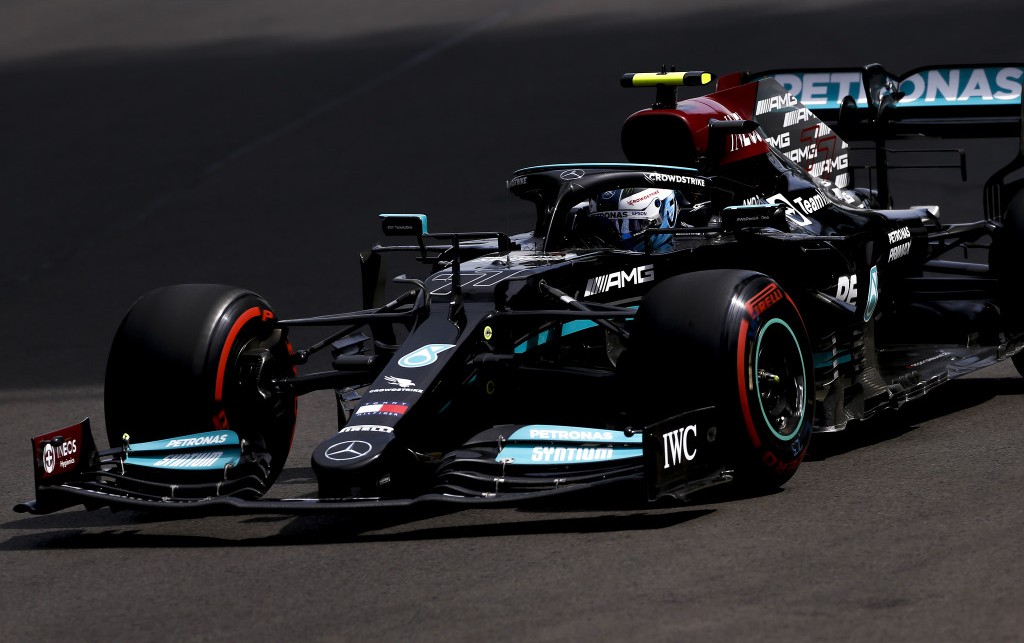Toto Talks São Paulo
Reflecting on the last race in Mexico, it was definitely a weekend of damage limitation for us. Given the track characteristics, we knew it would be a challenging weekend for us and that proved to be the case on Sunday.
The win was never in our grasp, but Lewis gave all he had to hang onto that second place, in a car that should probably have finished third. It was a strong defensive drive from him, securing valuable points for both Championships.
For Valtteri, his pole lap on Saturday was spectacular, which made Sunday’s result all the more painful after he was hit at Turn 1. That meant it was a very difficult afternoon for him, but we know that’ll only make him more determined to come back fighting next time out.
The best thing about a triple-header is you don’t have to wait long for a new opportunity to get the positive momentum back. We’re excited to be returning to Brazil, the fans are so passionate and Interlagos is such an iconic circuit. It’s not been our strongest track in recent seasons and has tended to suit Red Bull more, but this year has proved anything can happen. It’s the last sprint race weekend, too, which opens up more opportunity.
We’ll be throwing everything we’ve got at the Brazilian Grand Prix and the races beyond. We’re privileged to still be in the fight so late in the season and expect these titles to go right down to the wire, with both teams fighting hard to the very last lap. We’ve got some catching up to do and know it’ll be an intense battle, but we’ll continue to push hard and keep our eyes firmly set on the end goal.
Fact File: São Paulo Grand Prix
- The Autódromo José Carlos Pace is F1’s fourth-shortest circuit, with a lap length of 4.309 km. Only Monaco, Zandvoort and Mexico are shorter.
- Interlagos is situated 800 metres above sea level, the second-highest altitude on the F1 calendar, only behind Mexico City which has an altitude 1,500 metres higher.
- Interlagos is a track of two extremes. The first and third sectors require a low-drag car for the straights, but the long and twisty middle sector needs high downforce. Previously, this challenge would produce a range of different approaches to downforce levels, but the second DRS zone being added has meant teams now focus more on higher downforce.
- Over 75% of the lap time in the first and third sectors is taken at full throttle, but the twisty middle sector has less than 50%.
- From the exit of Turn 12 until the braking zone for the opening corner, there is 1.2 kilometres of driving at full throttle and an elevation change of 33 metres. However, the biggest elevation difference is from the start/finish straight to Turn 4, where there is a 40-metre drop.
- Front locking is frequent at Turn 1, because it is banked heavily towards the inside, which unloads the front-left wheel and causes drivers to lock the front wheels as the track drops away.
- However, the first turn is one of the few corners where you can lock up and not lose much lap time. This is because of the strong banking and variety of lines you can take, meaning you can still make the corner even with a moderate lock-up. The lack of load on the tyre prevents flat spots from occurring and often makes the lockups look worse than they are.
- There’s only a 195-metre dash from pole position to the first braking zone, which is one of the shortest sprints on the current calendar. The grid is uphill, so drivers need to find the balance between holding on the brakes as gently as possible, without rolling backwards.
- One of the key engineering challenges at the track is keeping the left-hand front tyre in the working temperature window, because from Turn 10 to Turn 6 (around 3.5 km in distance), it does very little work and therefore cools down quickly.
- Brazil is one of the easiest tracks to overtake on due to the long straights and braking zones, and this was improved even further when the second DRS zone was added. However, managing battery levels for the defending car can be difficult, as there are few big braking zones to recover energy between the longest straights.
- The weather can change quickly over the São Paulo Grand Prix weekend, and it isn’t uncommon for the track temperatures to change by 30°C between practice and the race, which makes it tricky to predict how the tyres will behave. Wet weather is also challenging, as there are a number of places where rivers can run across the track in heavy downpours.
- There are only 36 gear changes per lap at Interlagos, because of the flat-out sections and number of third and fourth gear corners, requiring not many upshifts.
- The Safety Car has appeared nine times in the last five races at Interlagos, with a probability of 60%, higher than many other races due to the unpredictable weather and lack of run-off area in some corners, meaning you can’t rapidly move cars to safety.
- The São Paulo Grand Prix marks the third and final Sprint Qualifying weekend format of the 2021 F1 season, having previously been run at Silverstone and Monza.











